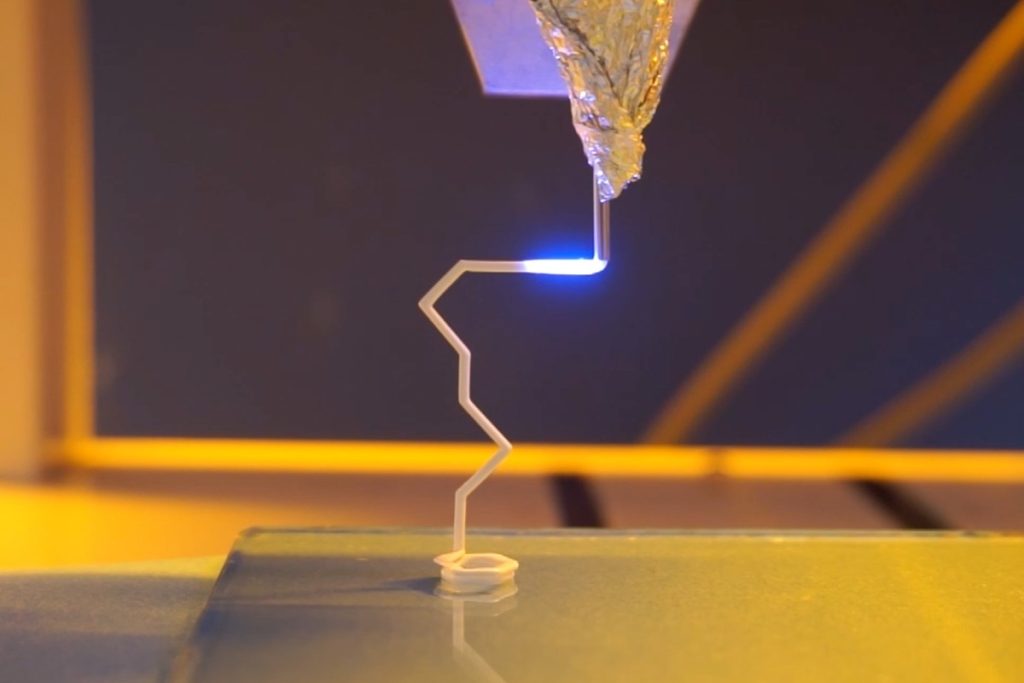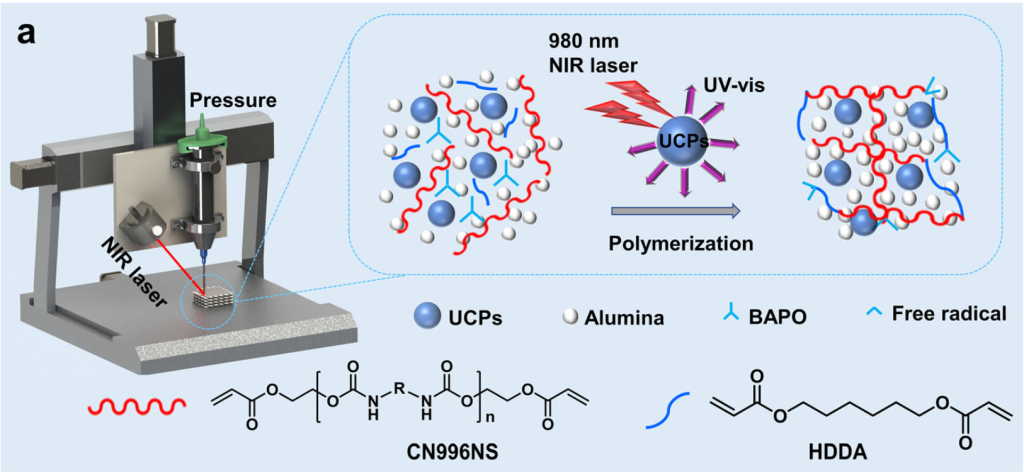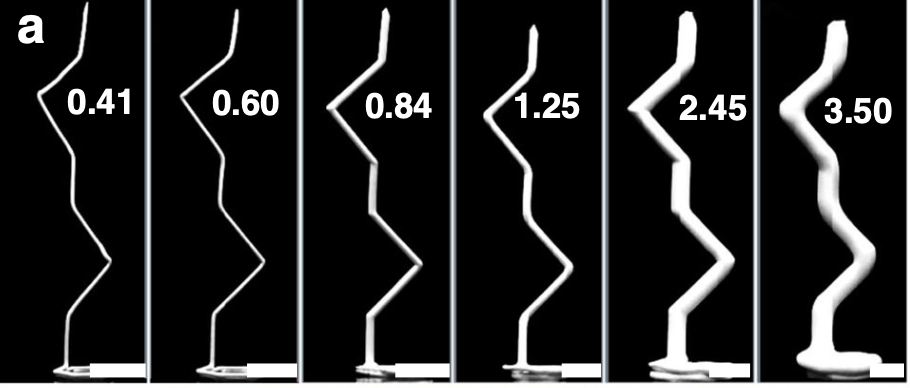Nominate now for the 3D Printing Industry Awards 2023.
Scientists at Jiangnan University, China, have developed a novel technique for 3D printing support-free complex ceramic structures.
Published in Nature Communications, the research highlights the new method’s in-situ curing capabilities for multi-scale filaments with diameters ranging from 0.41 mm to 3.50 mm.
This ceramic 3D printing method leverages a combination of direct ink writing (DIW) and near-infrared (NIR) light-induced up-conversion particle-assisted photopolymerization. As part of a two-step process, pressure is first applied to extrude the ceramic slurry. A 980 nm NIR laser is then targeted at the slurry as it exits the nozzle, immediately solidifying and curing the material in situ through photopolymerization. This allows for the 3D printing of ceramic structures that can be “freely stretched in space without support,” according to the researchers.
This new technique holds potential for a number of key verticals, including machinery, electronics, energy, aerospace, and biomedicine. Indeed, the functional ceramics used in this research possess a range of excellent mechanical properties such as structural stability, corrosion resistance, and high temperature resistance.
“This method will bring more innovation to the unsupported 3D manufacturing of complex shape ceramics,” the researchers claim, adding that “The unsupported additive manufacturing technology based on NIR-DIW opens up higher degrees of freedom for ceramic additive manufacturing design.”
The authors added that “the NIR-DIW methodology will get further expanded, and ceramic geometries produced without support will help generate more innovations and widespread the application of additive manufacturing technologies.”

The demand for support-free 3D printing
Traditional 3D printing processes, such as digital light processing, stereolithography, and binder jetting, can produce high resolution ceramic parts at good rates of production. However, certain geometries, for example large-span (structures that span a large distance without intermediate supports) and special shaped parts, require additional support structures during 3D printing – according to the researchers.
The removal of these supports can pose challenges, such as long processing times, higher cost, dimensional imprecision and poor surface quality. Additionally, micro-cracking can often occur during support removal, whilst internal support removal isn’t always viable for specially designed structures with poor openness and complex shapes.
Through this new in-situ NIR-DIW process, ceramic structures with flexible geometries and characteristics can be 3D printed without support structures. Additionally, it is claimed that this method reduces post-processing workloads and 3D printing time, enables greater throughput, improves manufacturing precision, and lowers material usage.

The NIR-DIW 3D printing process
In this new method, up-conversion particles (UCPs)-assisted photopolymerization (UCAP) induced by NIR light was coupled with DIW to allow for on-demand curing at controlled rates.
During this process, a 980 nm NIR laser is targeted at the ceramic slurry during extrusion. By adjusting the irradiation intensity and extrusion speed, the slurry can be near-instantaneously solidified and cured in situ. Additionally, the 3D printing process doesn’t require heating or cooling, making it “continuous and smooth.”
Using this technique, the researchers succeeded in near-instantaneously solidifying multi-scale filaments with diameters ranging from 0.41 mm to 3.5mm, at speeds of up to 41 mm/s. During the project, the scientists 3D printed a range of support-free ceramic structures, including torsion springs and cantilevers.
The research team also demonstrated that NIR light offers drastically improved curing depths over UV light. For instance, when testing the cure depth of the ceramic slurry, the researchers found that UV light reached a curing depth of 1.02 mm in around two minutes. However, with NIR light, the curing depth reached up to 3.81 mm in just 3 seconds of exposure.

Support-free 3D printing
This is not the first time researchers have sought to develop support-free 3D printing capabilities. Last year, scientists from Colorado State University announced that they had developed a new method of 3D printing carbon fiber-reinforced composite parts without the need for support structures.
This technique centered around a specially-developed thermoset resin and a unique curing process called frontal polymerization. Through this process, the 3D printed material cures as it is being extruded, meaning that the part becomes rigid almost immediately without any external UV or IR radiation. This process enables support-free 3D printing.
Back in 2021, 3D printing software developer Dyndrite launched a set of software APIs enabling 3D printer manufacturers to more easily implement advanced features such as support-free metal 3D printing. The API works by segmenting the part at resolutions finer than the minimum feature size. This allows for unique support-free processing parameters to be assigned to different volumes within a part.
Subscribe to the 3D Printing Industry newsletter to keep up to date with the latest 3D printing news. You can also follow us on Twitter, like our Facebook page, and subscribe to the 3D Printing Industry Youtube channel to access more exclusive content.
Are you interested in working in the additive manufacturing industry? Visit 3D Printing Jobs to view a selection of available roles and kickstart your career.
The support-free ceramic 3D printing process in action. Photo via Jiangnan University.
منبع: https://3dprintingindustry.com/news/scientists-make-breakthrough-in-support-free-ceramic-3d-printing-224411/?utm_source=rss&utm_medium=rss&utm_campaign=scientists-make-breakthrough-in-support-free-ceramic-3d-printing
